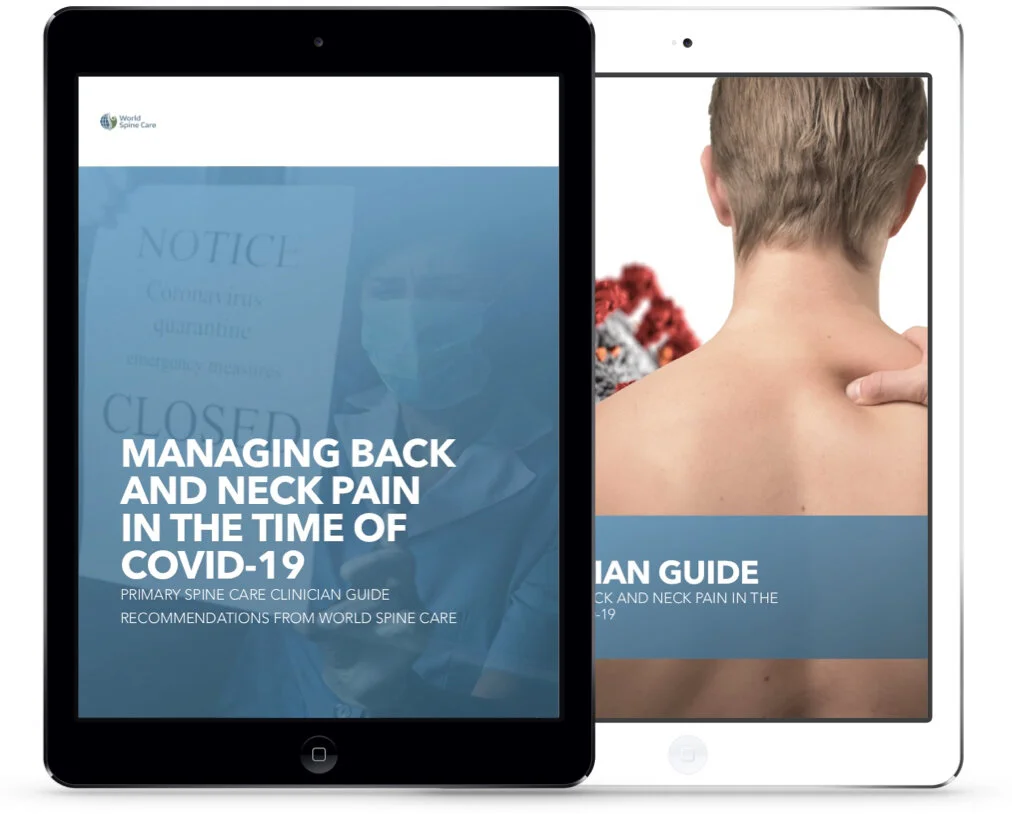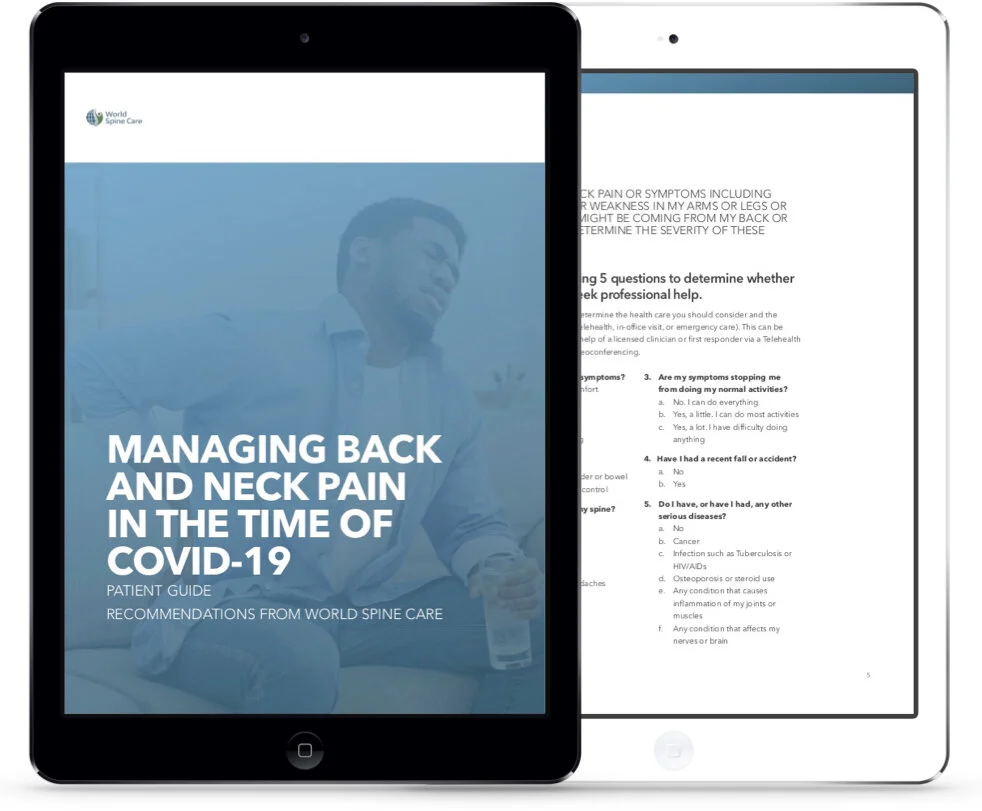A new peer-reviewed article describes World Spine Care & GSCI's guides for managing neck and back pain
A new paper from World Spine Care and the Global Spine Care Initiative was recently published in the journal JMIR Public Health and Surveillance.
The article Distance Management of Spinal Disorders During the COVID-19 Pandemic and Beyond: Evidence-Based Patient and Clinician Guides From the Global Spine Care Initiative describes the process that the authors underwent to develop the guides for Managing Neck and Back Pain in the Time of COVID-19 released last year. It also discusses the strategies for evidence-based management of spinal pain via telehealth or when direct access to healthcare providers is not available.
“This article goes a long way to advance evidence-based care for people disabled by or concerned about spine-related disorders, but who have no direct access to a spine care clinician,” said lead author Scott Haldeman.
After the coronavirus pandemic was declared, World Spine Care closed its community clinics and put its efforts toward providing online resources for spine care clinicians. Following an open iterative consensus process, 29 authors from 10 countries on 4 continents developed 2 guides - one for clinicians and one for patients - to inform the management of spine pain during the pandemic. The team included practitioners in family medicine, neurology, physiatry, rheumatology, psychology, chiropractic, physical therapy, and yoga, as well as epidemiologists, research methodologists, and laypeople. The guides were made freely available on the World Spine Care website as downloadable PDFs on April 26, 2020. Since then, the webpage has been visited over 5,000 times.
“This article goes a long way to advance evidence-based care for spine-related disorders.”
Once the guides were published, the authors realized that the recommendations were not only applicable during the COVID-19 pandemic, but could be used in many other cases where in-person consultation and treatment are not possible. Around the globe, 1 billion people suffer from spinal pain, and the majority do not have reliable access to healthcare providers with adequate training in spine care. The questions in the Patient Guide help back pain sufferers recognize whether their condition merits a call or in-person visit to a healthcare provider. The guide also provides suggestions and resources for home exercises and self-management options. The Clinician Guide includes 5 steps that provide a clear framework for doctors, chiropractors, and physiotherapists to effectively triage their patients from a distance - whether on the phone or during a telemedicine visit.
The authors are optimistic that the published guides will continue to be useful after the pandemic and that they have the potential to reduce the overutilization of unnecessary and expensive treatments for back pain. The guides empower patients to self-manage spine pain when appropriate.
JMIR Public Health & Surveillance is a PubMed-indexed, peer-reviewed sister journal of the Journal of Medical Internet Research (JMIR), the top-cited journal in health informatics (Impact Factor 2016: 5.175).
Access the article and learn more about World Spine Care and the Global Spine Care Initiative here.
The webpage for the COVID-19 guides for managing back and neck pain has been accessed over 5,000 times in the past 10 months.
To support World Spine Care’s mission to provide quality, evidence-based spine care to underserved populations, make a donation.



